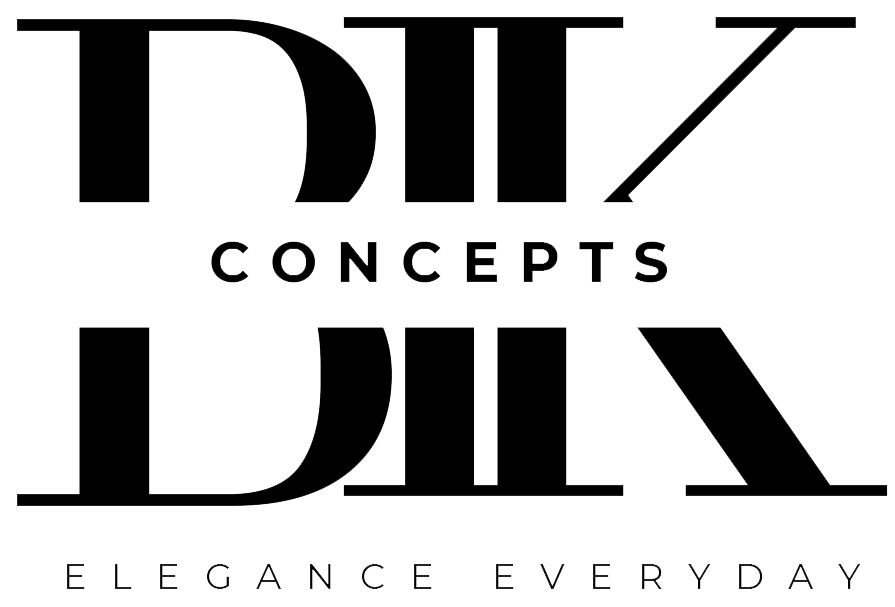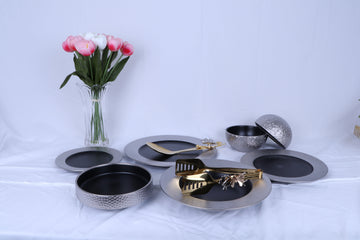The welcoming table is created with the first service, the dinner plate. In fact, the types of dinner plates we have to choose from today vary from timeless to modern, porcelain to melamine, a mixture of style, strength and utility. Learning where these designs come from in terms of materials, the manner in which they were presented, and the intended purpose behind them helps hosts know the best kinds of dinner plates to use for daily meals as well as occasions. The current guide examines the most preferred items on American tables, explains the differences between items and provides direction on the selection of plates that will meet one’s individual taste and lifestyle.
Classic Ceramic Choices
Ceramic dinnerware is rife in homes because it offers a compromise between price, appearance, and functionality. In ceramics, many varieties of dinner plates exist. Porcelain plates are baked at high temperatures and create a hard body with a white and translucent front, which is preferred in dressy dinner services. Bone china is porcelain with bone ash that makes it light and chip-resistant enough to be used on weddings or holiday feasts.
Stoneware plates are thicker than porcelain, and have a rustic glaze that conceals small scratches, these are a sensible choice for families who use a dishwasher every day. Earthenware is at the other extreme of the firing curve with rough body glossed with colorful glazes. Although, earthenware is rather vulnerable to chipping and should be treated carefully as it brings warmth to the casual tables.
Glass and Crystal Plates for the Visual Operations
Neat or coloured glass dishes reveal and enhance colourful food. Tempered glass is not prone to the thermal shock which is why these plates can be transported from the fridge to the microwave without breaking. Crystal dinner plates, not as common, enhance fine dining where light catching facets take the meal into a higher level. Since crystal usually has lead or lead-free substitutes, it should be designated for occasional use and washed by hand in order to maintain clarity.
Durable Everyday Alternatives
Shatter-resistant melamine matches the shine of glazed ceramic, but it is way lighter in weight and can withstand accidental dropoffs. Mellamine’s sturdiness makes it perfect for the outdoor barbecue, the kids’ party, and the poolside snack. Timelessly iconic stainless steel dinner plates that once dominated the camping industry have re-emerged on the home front with their slick veneer, 100 percent recyclability, and all. The effect of the wooden plates made from acacia or teak is to provide an earthly feel when set in farm-to-table functions, but they must be oiled, therefore, from time to time to avoid splitting open.
Sustainable and Disposable Options
An eco conscious host may sway towards the bamboo composite plates, that combine food-safe binders with rapidly growing bamboo fibers. For large events where washing hundreds of plates is not possible, compostable palm leaf or sugarcane dinner plate comes in handy. They serve hot entrées without sagging, decompose commercially in composting facilities, increasing the variety of plates for dinner, which reduces environmental footprints.
Form and Dimension that Affect Service
Other than material, shape plays a part in directing the ways in which food is presented as well as the portion sizes. Traditional round turkish platter compare to 10 to 12 inches in diameter, able to accommodate portion sizes such as protein, vegetables, and starch in appropriate proportions. Square and rectangular plates call modern cuisine using the symmetrical edges emphasizing colored sauces. Coupe plates abandon the raised edge, altogether, enticing chefs to spread a salad or cut steak out across an open space. Pasta plates involve a soft well that nests noodles, and bistro plates with wide rims provide visual drama to saucy entrées.
Specialty Plates for Full Services Settings
In most homes, the dinner plate is an anchor to a stack that has salad and dessert sizes. Formal dining adds stages like charger plates, which lie under the main course only to add ornamental value and compartment plates that keep foods apart for diet restricted persons. This hierarchy makes it easy to entertain since hosts can combine patterns but at the same time observe etiquette.
Aspects to Consider When Picking the Best Kind of Dinner Plates
Endurance is at the top of the checklist for busy families. If toddlers are learning how to eat at the table, melamine or tempered glass plates reduce the breakage anxiety. Heat performance follows. If one is an enthusiast of microwaves, make sure glazes are lead-free and microwave safe, while grill masters might prefer plates that allow them to be warmed up in the oven. Weight influences comfort too; Bone china’s feather-light feel of the dinnerware hushes wrist strain for multiple-course service, providing more efficiency, while Stoneware conveys a hearty homestyle appeal through its considerable heft.
Maintenance also matters. Dishwasher safe labels spare hand washing jobs, but metallic rim decorations usually necessitates soft cleaning. Storage space counts as well. Coupe plates pack in tightly, saving cabinet shelves, whereas plates with ornate rims may require felt separators. Finally, consider sustainability. Customers who want to minimize their carbon footprints can choose to consume locally produced Stoneware or certified bamboo plates since they travel fewer miles from the factory to the table.
Caring for Your Dinner Plates
Careful handling of plates increases their time of function irrespective of the material. Let hot dishes stand a little while before pouring them into cold water lest you cause thermal shock, the result of shocking food with too-cold water or too-hot food on a cold environment. Use soft detergents and nonabrasive sponges on glazed surfaces in order not to dull the shine. Stack plates with the use of a paper towel or a felt divider between each piece if the cabinets shake as doors close. For wooden plates, clean quickly using warm water and dry well, and pamper with food-grade mineral oil once a month. Stainless steel plates shine up with a baking soda paste burnished with the grain.
Trends Shaping Future Plate Designs
Americans consumers continue to ask for dinnerware that has aesthetic values and ethical commitments. On your sight will be hybrid plates that combine old glass with porcelain clay and attain the brilliance of glass and the strength of ceramic. Manufacturers are also tinkering with resins made from plants that are not toxic to rival melamine in durability but without synthetic additives. Smart plates with QR codes may soon direct diners to recipe suggestions and sustainability reports for products they buy, scaling up the discussion of types of dinner plates away from mere functionality.
Conclusion
If you are more inclined to appreciate the minimalist purity of white porcelain or the indestructible convenience of melamine, an understanding of the variety of shapes of dinner plates will allow you to choose a form matching the function. When balancing the weight, shape, longevity, and environmental impact of material, you can make a confident decision about what sort of dinner plates to use on a day-to-day basis in the family and during special occasions.
occasions. Spending money on quality plates pays off in faithful service years on end and a table which is always welcoming, regardless of occasion.







